Introduction
In the rapidly evolving landscape of cloud computing, understanding the distinctions between Infrastructure as a Service (IaaS) and Platform as a Service (PaaS) is essential for organizations seeking to optimize their technological investments. These two models cater to unique business requirements, with IaaS offering a robust framework for managing virtualized computing resources, while PaaS simplifies the application development process through integrated tools and environments. This article delves into the key differences, advantages, and use cases of both IaaS and PaaS, providing insights that can guide organizations in making informed decisions aligned with their operational goals.
By examining the flexibility, scalability, and security considerations inherent in each model, businesses can better navigate the complexities of cloud services and leverage their full potential for innovation and efficiency.
Key Differences Between IaaS and PaaS
Infrastructure as a Service and Platform as a Service are crucial elements of the cloud computing environment, each addressing distinct organizational requirements and goals. IaaS offers virtualized computing resources such as servers, storage, and networking over the internet. This model empowers organizations with substantial control over their IT infrastructure, enabling them to customize the operating system and software to meet specific requirements. However, this flexibility comes with increased management responsibilities, necessitating skilled IT personnel to oversee operations and maintenance.
In contrast, platform as a service simplifies the development process by providing a platform that allows developers to build, deploy, and manage applications without the complexities associated with maintaining the underlying infrastructure. By abstracting these complexities, platform as a service accelerates development cycles and fosters innovation, as developers can focus on writing code and enhancing user experiences rather than managing hardware and software environments. This model is particularly advantageous in today's fast-paced digital environment, where speed and agility are paramount.
The selection between infrastructure as a service and platform as a service frequently depends on an organization's strategic objectives. For example, a manufacturing firm aiming to adopt Industrial Internet of Things (IIoT) solutions might favor IaaS for its versatility in managing data and services. In contrast, a startup aiming to quickly launch a new application might opt for PaaS to leverage its rapid deployment capabilities without the overhead of infrastructure management.
Recent trends suggest a change in how companies approach cloud services. A study found that 25% of entities in the UK have migrated a significant portion of their cloud workloads back to on-premises infrastructures, citing security concerns and project expectations as primary motivators. This shift underscores the importance of selecting the right cloud service model based on individual organizational needs and market dynamics.
As companies progressively adopt digital transformation, comprehending the differences and advantages of Infrastructure as a Service and PaaS becomes essential for aligning technology investments with business goals. With the right approach, organizations can harness the full potential of cloud computing to drive efficiency, innovation, and customer satisfaction.
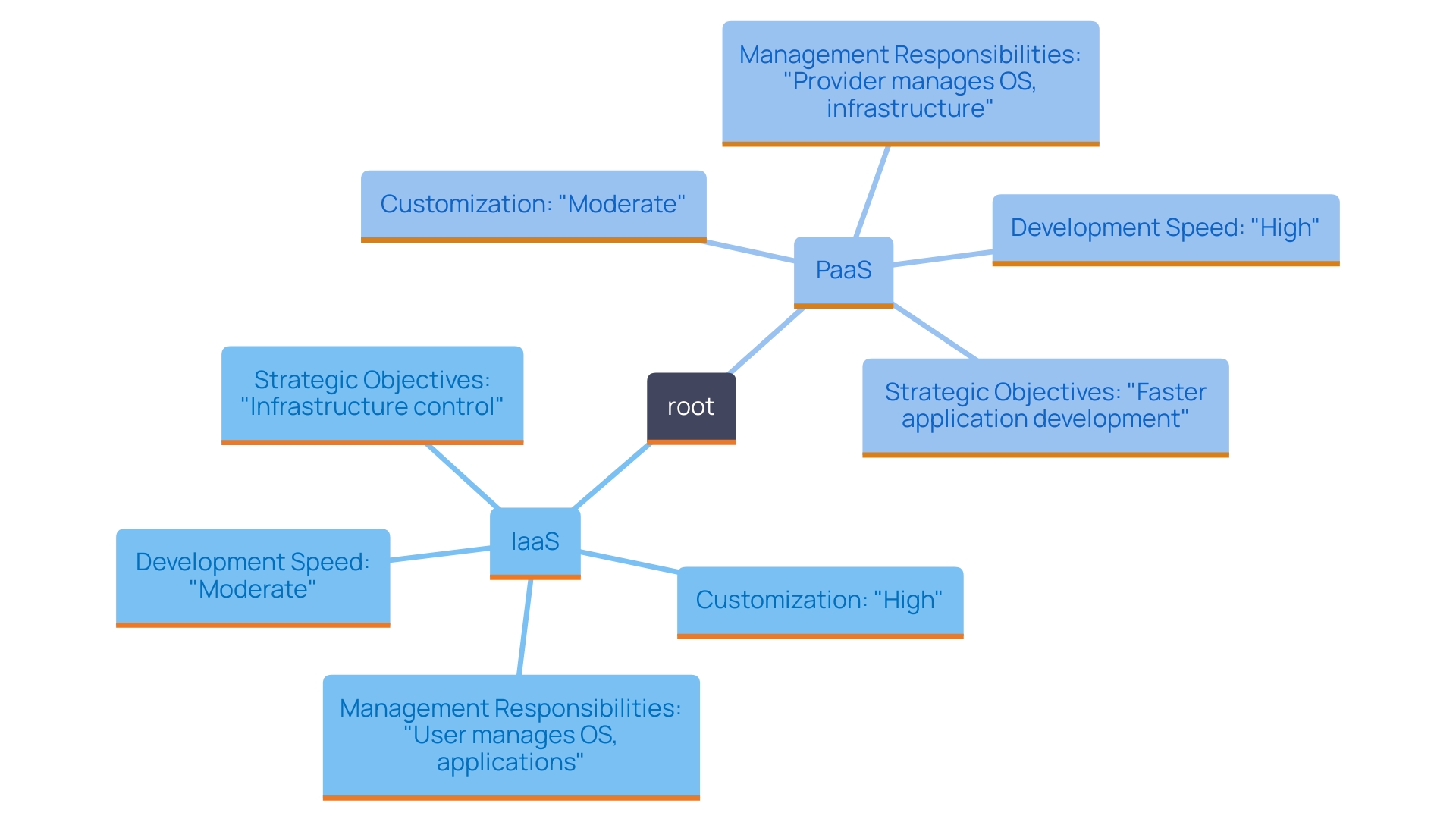
Components of IaaS and PaaS
Infrastructure as a Service includes essential components such as virtual machines, storage systems, and networking capabilities, all accessible through a user-friendly dashboard or API. This model offers users with raw computing capacity, enabling the installation and setup of operating systems and software. A significant advantage of IaaS is its scalability; organizations can adjust resources up or down based on demand, ensuring they pay only for what they utilize. This flexibility is crucial for businesses looking to support growth without overspending on infrastructure.
Conversely, Platform as a Service provides a more cohesive setting for software development. Its components encompass development tools, middleware, database management systems, and hosting services for software. Platform as a Service solutions are designed to streamline the development process, incorporating built-in software development kits (SDKs), libraries, and APIs that facilitate rapid application creation and deployment. As noted by industry leaders, platform as a service environments enable faster implementation of improvements and new features, with advanced monitoring capabilities enhancing security and reliability.
Companies leveraging these services can focus on innovation without the burden of managing underlying infrastructure. For instance, Rackspace’s Elastic Engineering illustrates how businesses can maintain operational efficiency while responding to global demands. This model not only ensures that critical systems are robust and scalable but also allows for continuous monitoring and proactive support.
In today's swiftly changing technological environment, grasping the key distinctions and advantages of infrastructure as a service and platform as a service is crucial for making knowledgeable choices that align with organizational objectives and foster transformation.
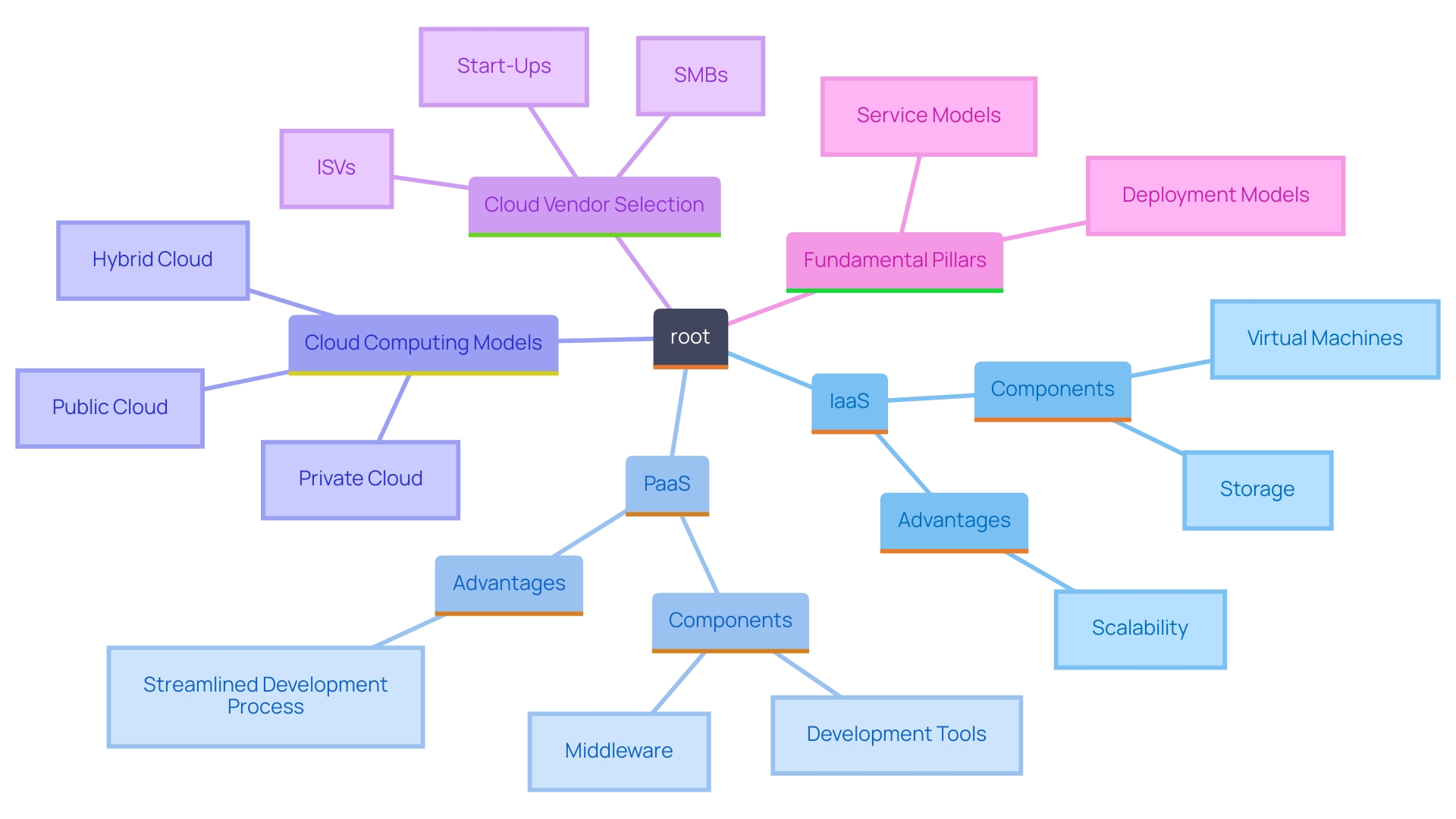
Advantages of IaaS
Infrastructure as a Service provides substantial benefits that can greatly assist entities dealing with the intricacies of cloud computing. One of the foremost benefits is its unparalleled flexibility, enabling businesses to seamlessly scale resources to match fluctuating demands. This dynamic resource allocation can lead to substantial cost savings, as companies can bypass the capital expenditures associated with maintaining physical hardware.
Moreover, infrastructure as a service empowers organizations with complete control over their infrastructure, allowing for custom configurations that can be tailored to specific operational needs. This is especially beneficial for firms with distinct compliance needs, as infrastructure as a service enables the development of a framework that aligns with regulatory criteria while also adjusting to changing business goals.
As companies more and more acknowledge the significance of digital infrastructure in sustaining a competitive edge, infrastructure as a service functions as an essential resource. This model not only supports the deployment of applications and services but also enhances the overall agility of IT operations. By utilizing infrastructure as a service, enterprises can concentrate on innovation and efficiency without the burden of managing physical assets. In a landscape where 93% of IT leaders have engaged in cloud repatriation projects, the strategic implementation of IaaS can be a critical factor in addressing challenges associated with data security, performance, and cost-effectiveness.
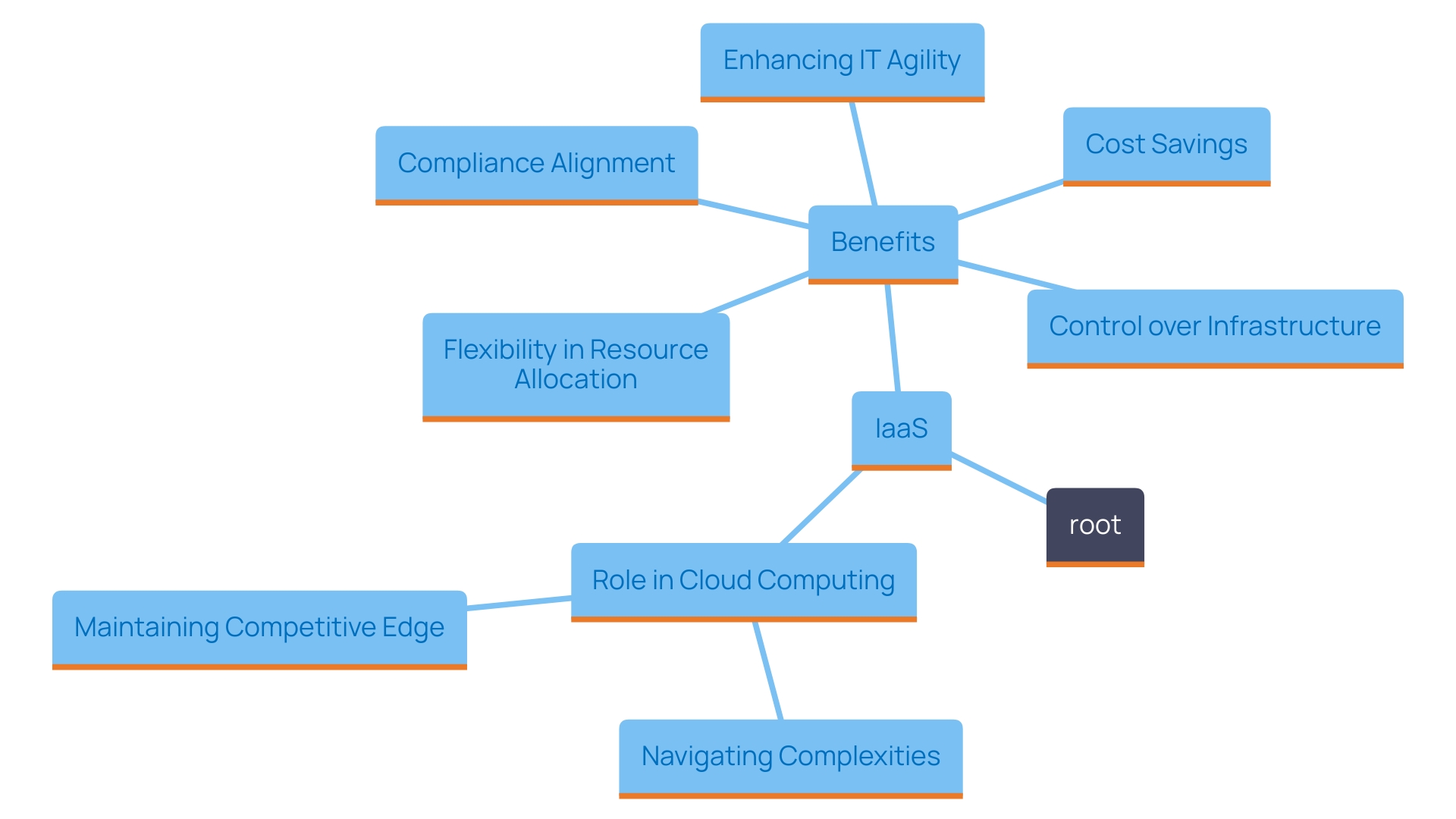
Advantages of PaaS
Platform as a Service greatly improves software development by simplifying procedures that usually weigh down developers. One of the primary benefits is the ability for developers to concentrate on writing and deploying code without the intricacies associated with managing underlying hardware and software infrastructure. This focus leads to a marked reduction in time-to-market for new applications, an essential factor in today’s fast-paced technological landscape.
'Collaboration also flourishes within a platform-as-a-service setting, as it generally provides integrated tools vital for version management, automated testing, and smooth deployment.'. These features facilitate teamwork among developers, enabling them to work together more effectively, regardless of their physical locations. As emphasized by industry experts, "it is imperative to understand the needs and requirements first to make a decision about the kind of cloud service to use," which highlights the tailored approach platform as a service provides for diverse development teams.
Another significant advantage of platform as a service is its inherent scalability. 'Contemporary software often faces diverse demands, and platform-as-a-service solutions incorporate inherent scalability capabilities that enable software to handle these variations with ease.'. This capability ensures that businesses can maintain high-quality service during peak usage times without compromising performance. Indeed, as the need for software increases, platform solutions are created to automatically modify resources such as bandwidth and server capacity, capturing the true nature of scalability.
Additionally, platform-as-a-service options are provided with monitoring tools that offer practical insights into software performance. These tools provide real-time visibility into resource usage, allowing for comprehensive performance monitoring and optimization. Ensuring that applications remain safe, secure, and available is another cornerstone of PaaS, which further solidifies its value in the development lifecycle. By automating various stages—from coding to deployment—PaaS acts as a strong platform that supports the entire development process, making it an invaluable resource for businesses aiming to innovate and adapt swiftly.
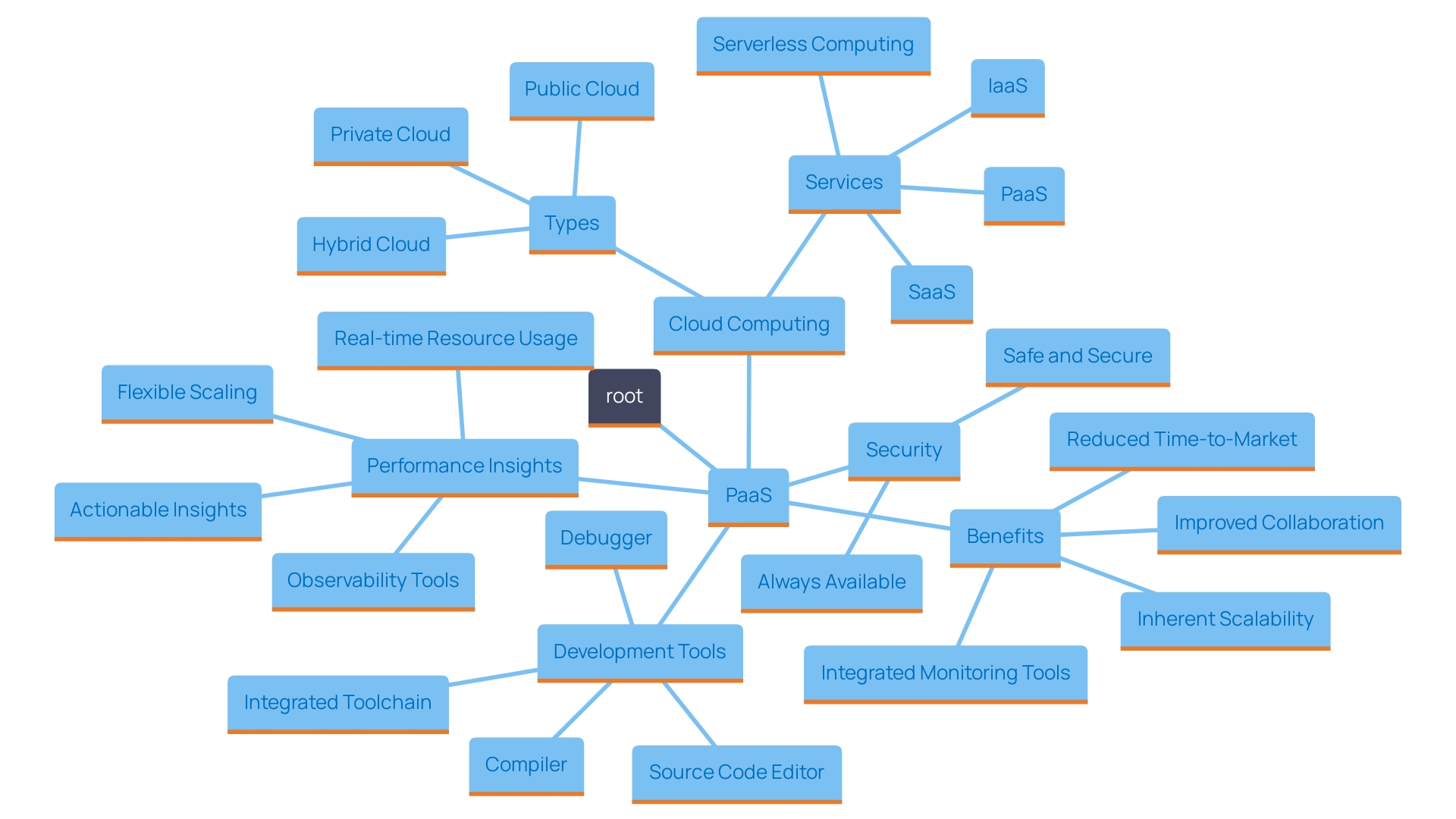
Use Cases for IaaS
Infrastructure as a Service provides a robust solution for businesses that require high levels of customization and control over their IT environments. This cloud-based model allows organizations to rent essential IT resources such as computing power, storage, and networking capabilities, effectively transforming their operational landscape.
Infrastructure as a Service is particularly advantageous for various applications, including hosting websites, running enterprise applications, and managing extensive big data analytics projects. For instance, companies like Chess.com demonstrate the effectiveness of their infrastructure services by efficiently managing over ten million chess games daily for their global community of more than 150 million users. 'James Kelty, Head of Infrastructure at Chess.com, emphasizes the importance of a stable IT infrastructure to deliver seamless experiences to users, reflecting the critical role Infrastructure as a Service plays in supporting their mission.'.
Moreover, infrastructure as a service serves as an effective solution for disaster recovery, allowing rapid resource provisioning during unforeseen failures. This flexibility is vital for businesses needing to maintain uptime and ensure data integrity. In recent industry discussions, experts have emphasized how infrastructure as a service allows businesses to pivot swiftly, adjusting to challenges while ensuring operational continuity.
The scalability of infrastructure as a service further empowers businesses to adjust their infrastructure according to evolving needs. By utilizing cloud services, organizations can avoid the burdens of purchasing and maintaining physical hardware, thereby reducing operational costs and enhancing efficiency. As one expert aptly put it, IaaS acts as a virtual toolbox filled with essential resources, offering a pathway to innovation without the complexities of traditional IT management.
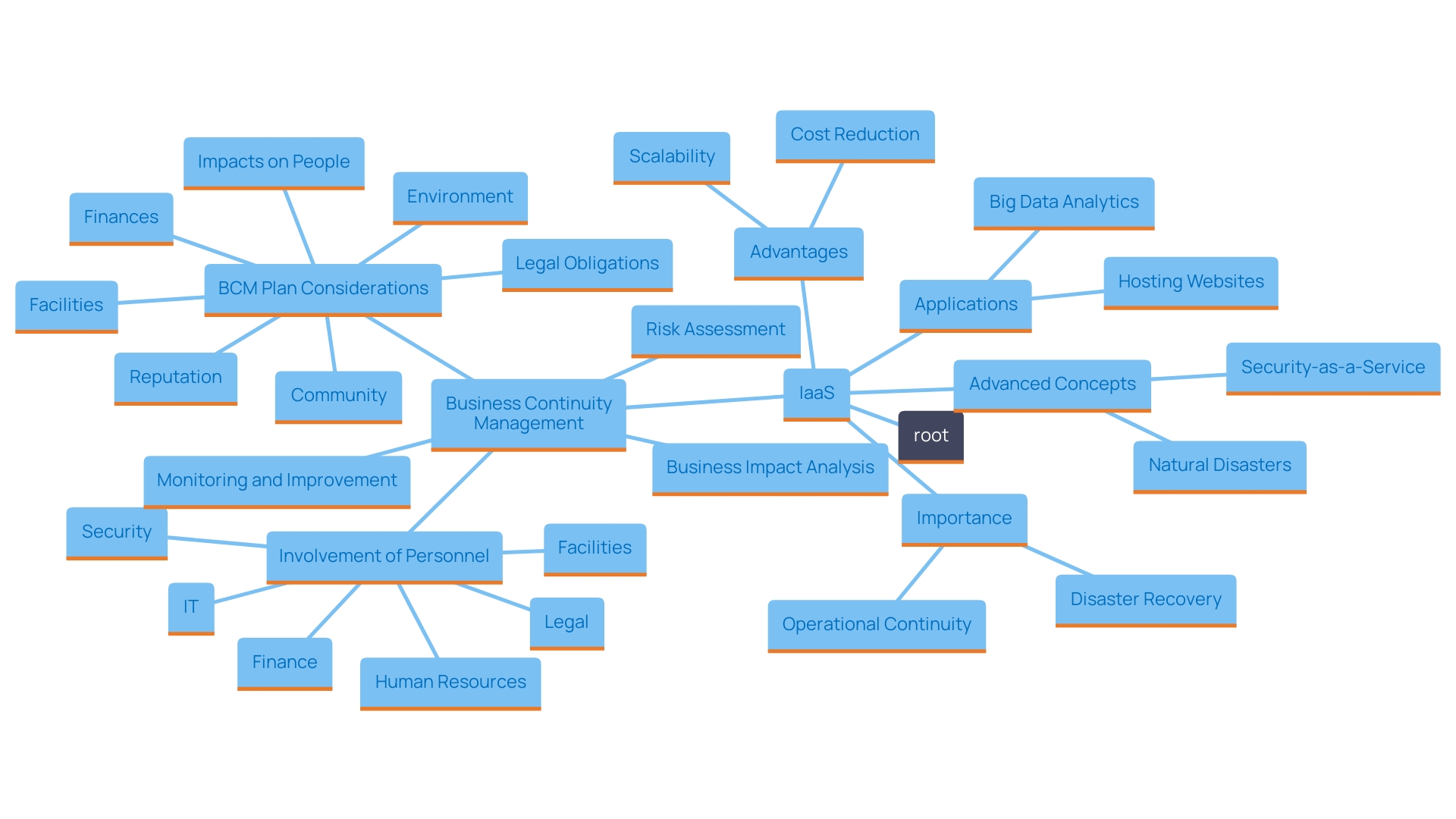
Use Cases for PaaS
Platform as a Service (PaaS) is a powerful option for businesses aiming to improve their software development and deployment processes. Its primary advantage lies in its capability to streamline the software development lifecycle, enabling organizations to innovate rapidly and effectively. For instance, businesses can utilize platform as a service to create mobile applications, develop microservices, and implement APIs with relative ease.
An important instance illustrating this is the University of Gothenburg, which chose a platform-as-a-service method to build a new web platform in 2020. This strategic decision allowed their developers to accelerate testing, deployment, and the launch of new services, significantly enhancing their operational efficiency.
Platform as a Service environments provide an integrated toolchain that encompasses all essential development tools, such as source code editors and debuggers, ensuring that developers have everything they need at their fingertips. This comprehensive support enables teams to experiment with new ideas in a controlled setting, fostering innovation without requiring substantial upfront investment. In fact, many platform-as-a-service providers ensure optimal performance through observability tools that deliver actionable insights, facilitating continuous improvement and scalable resource management as businesses grow.
Furthermore, the flexibility provided by the platform as a service is underscored by its ability to support multiple frameworks like Ruby on Rails, Django, and Laravel. This compatibility enables entities to utilize familiar tools, thereby minimizing the learning curve and accelerating the development process. 'As entities increasingly adopt PaaS solutions, they not only enhance their application delivery capabilities but also align their technological framework with broader business objectives, driving both agility and efficiency in the competitive digital landscape.'.
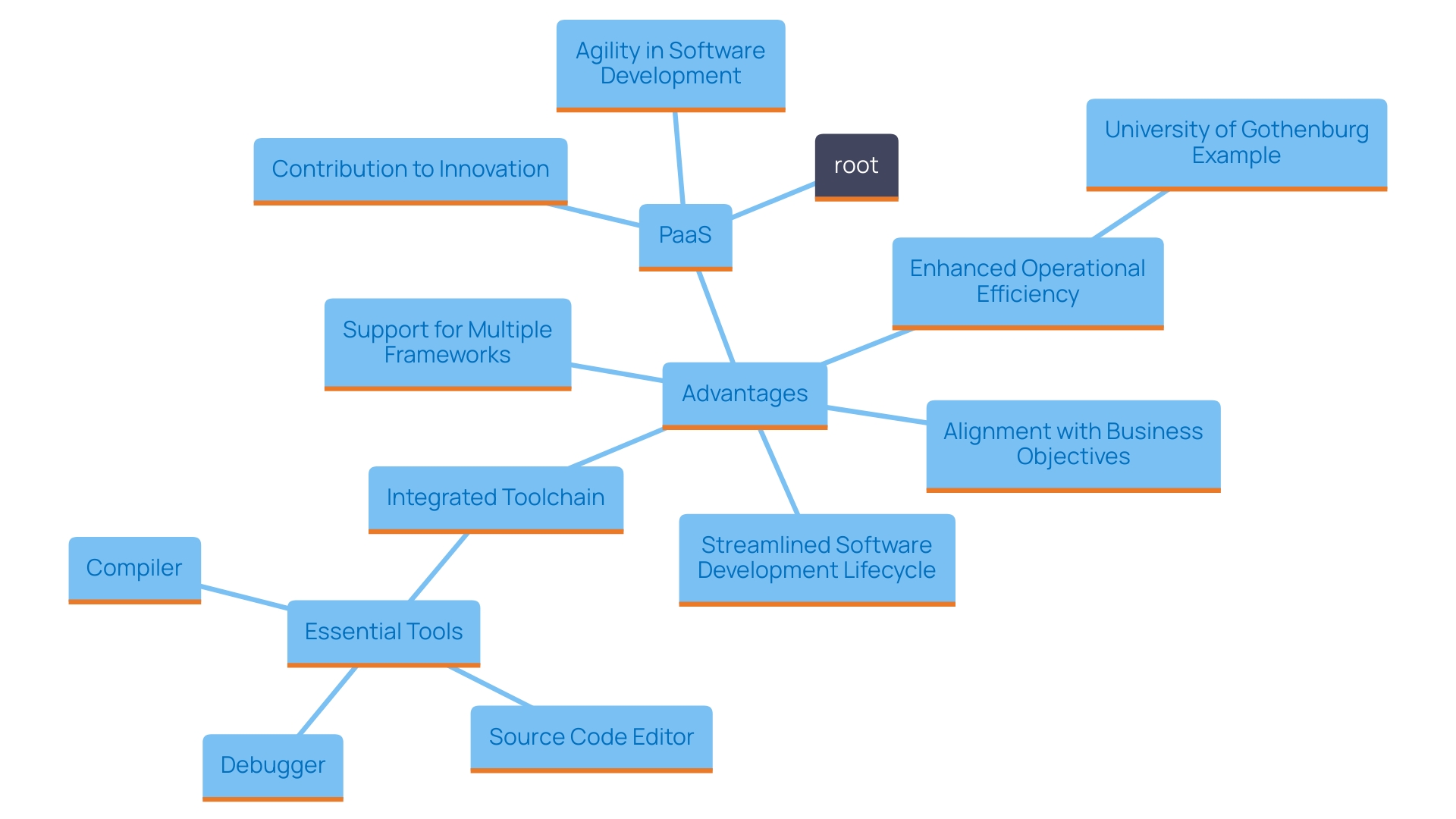
Flexibility, Scalability, and Affordability
'Infrastructure as a Service provides unmatched flexibility and scalability, allowing organizations to allocate and release resources according to their changing requirements.'. This model is particularly appealing for businesses seeking a cost-effective, pay-as-you-go pricing structure that aligns with fluctuating demand. For example, companies like Chess.com leverage IaaS to manage their vast infrastructure requirements, supporting over ten million chess games daily while maintaining a robust user experience for their community of 150-plus million players.
On the other hand, Platform as a Service offers a different kind of scalability, specifically tailored for application-level expansion. This model allows developers to focus on enhancing functionalities and user experience without the burden of managing underlying infrastructure. The efficiency gained in application development translates into significant cost savings, reducing management overhead and accelerating deployment times. As highlighted by industry leaders, the integrated toolchains provided by top platform-as-a-service providers are crucial for optimal performance and user experience. Such tools ensure that developers have access to comprehensive performance monitoring and security measures, which are critical in today’s competitive market.
In recent studies, it was revealed that a notable 25% of organizations in the UK have shifted half or more of their cloud workloads back to on-premises solutions, highlighting the ongoing evolution of cloud strategies. This trend highlights the significance of evaluating organizational requirements and matching them with the appropriate service model, whether it is infrastructure as a service or platform as a service, to guarantee sustainable growth and operational efficiency.
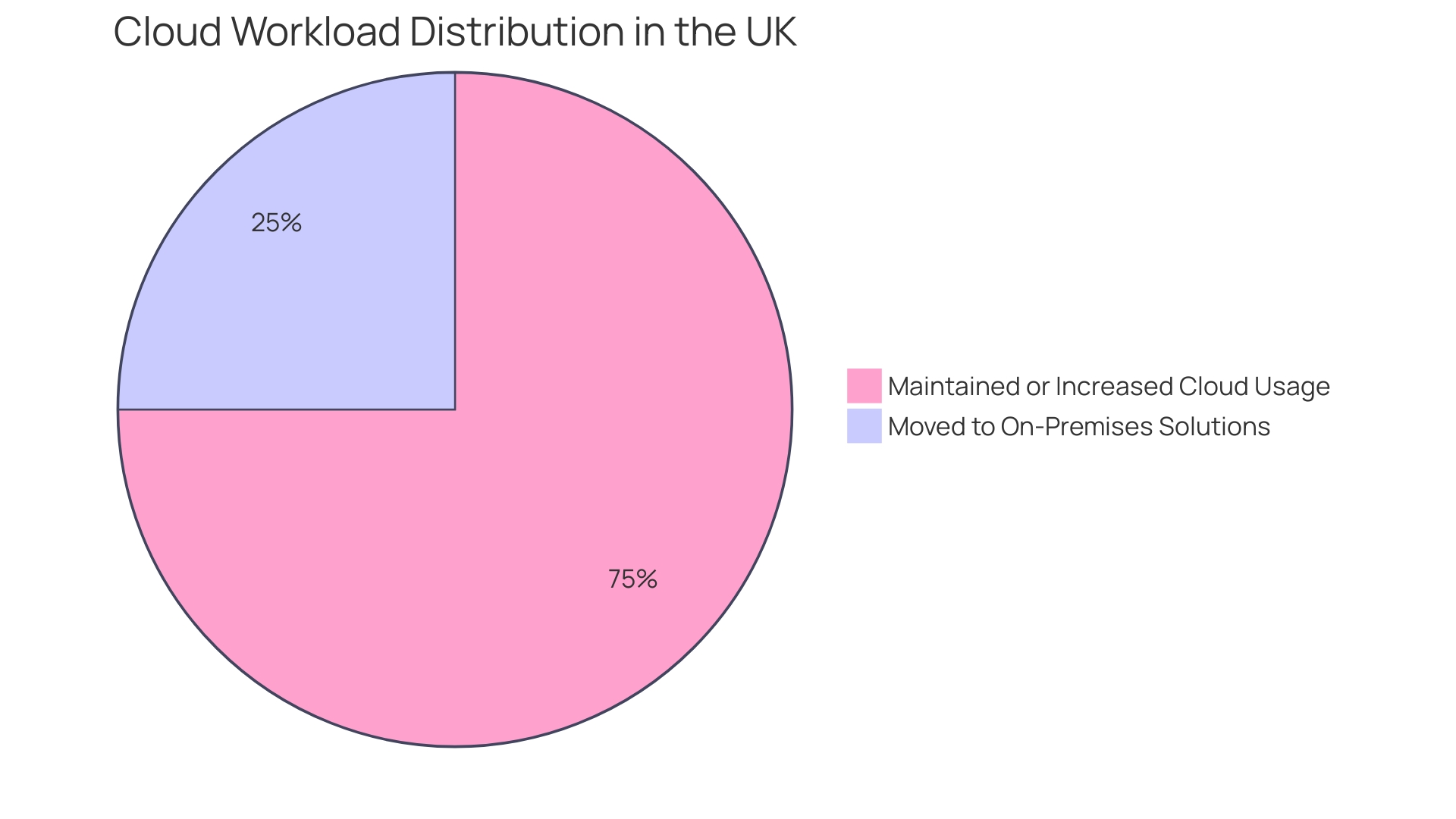
Deployment Time and Speed
Deployment times for Infrastructure as a Service can vary significantly based on the particular setup and oversight of the underlying infrastructure. Although Infrastructure as a Service enables the swift allocation of resources, organizations frequently face delays associated with the setup and configuration processes. This complexity arises because IaaS requires a significant degree of customization for the environment, which can slow down the overall deployment timeline.
On the other hand, Platform as a Service significantly speeds up deployment durations by providing pre-set environments and combined tools designed for software development. By streamlining the lifecycle management processes, PaaS enables businesses to deploy new software and updates more efficiently. This is especially important in a landscape where continuous updates are necessary to meet modern standards for software development and user experience.
Research indicates that the deployment strategy significantly impacts a program's performance and stability. Enterprises increasingly automate application deployment steps such as configuring the environment, installation, and testing, which not only enhances speed but also ensures consistency across different environments. For instance, adopting a standard operating environment (SOE) can further optimize deployment efficiency, allowing teams to focus on delivering value rather than managing infrastructure complexities.
In essence, while infrastructure as a service provides flexibility and control over the infrastructure, platform as a service offers a more streamlined approach that aligns with the fast-paced nature of today's software development demands. As noted by industry experts, the integrated toolchain provided by PaaS solutions is crucial for optimal performance and user experience, enabling organizations to scale and innovate with agility.
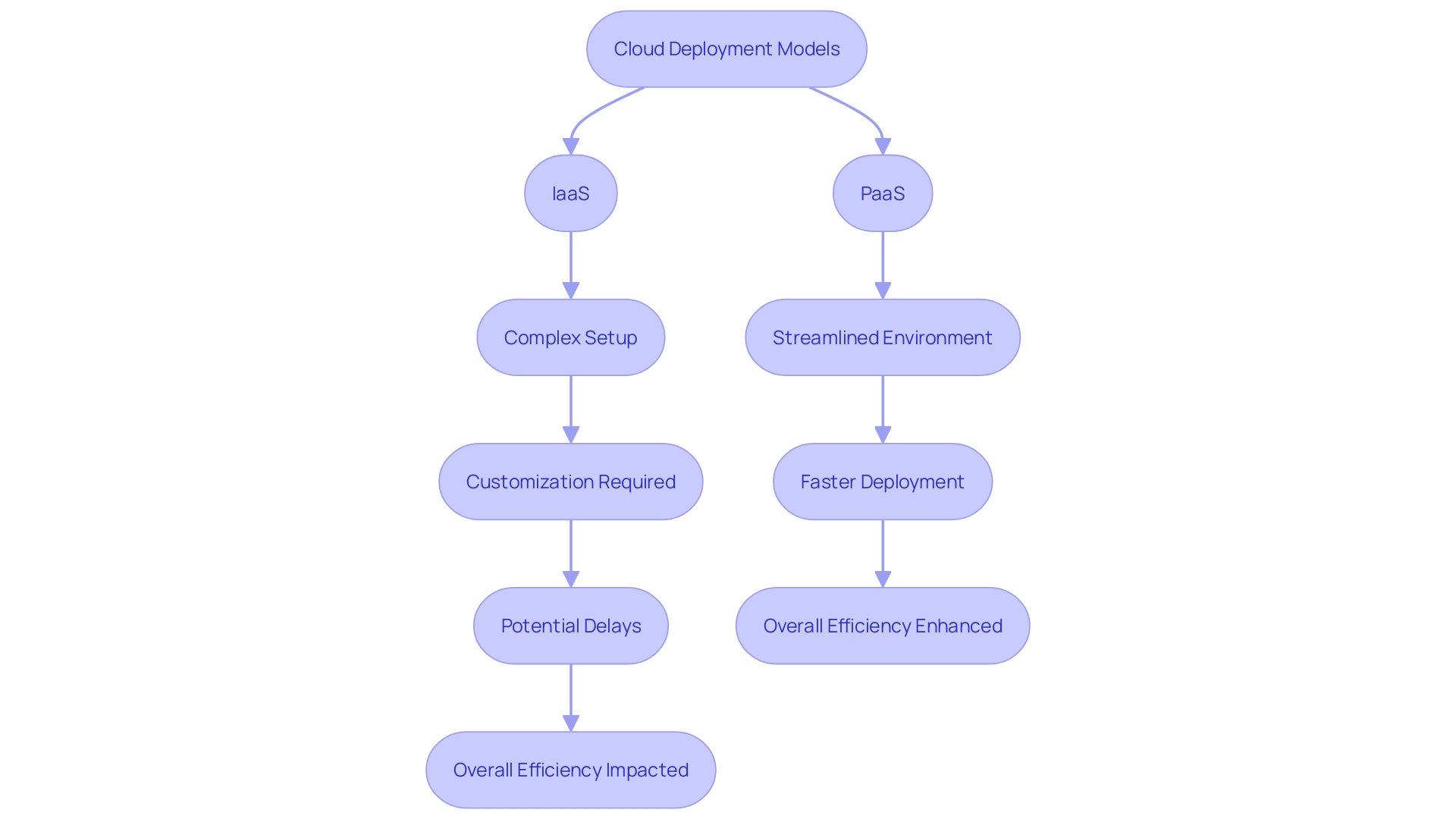
Performance and Security Considerations
Infrastructure as a Service is renowned for its high performance, largely attributed to the dedicated resources it provides to users. However, security remains a significant concern, heavily influenced by the user's ability to configure and manage security measures effectively. Organizations utilizing IaaS must take proactive steps to implement their own security protocols, including firewalls and intrusion detection systems. According to recent studies, many organizations struggle with cloud security, indicating that establishing a robust security framework is essential for maintaining a strong security posture in evolving cloud environments.
On the other hand, Platform as a Service provides integrated security functionalities that can ease the handling of security threats. While platform as a service solutions may expose users to vulnerabilities associated with shared environments, leading providers in the space, such as Cloudzy, have made significant investments in security measures. This includes forming strategic collaborations with cybersecurity experts to enhance user safety and data integrity. As highlighted by industry insights, the cloud computing market is projected to grow at a compound annual growth rate (CAGR) of over 18%, underscoring the increasing importance of secure and innovative cloud solutions.
Additionally, platform-as-a-service offerings frequently include sophisticated observability tools that deliver practical insights, assisting entities in tracking performance and improving security strategies efficiently. These capabilities enable entities to scale their applications seamlessly while ensuring optimal performance and security. Consequently, numerous entities are discovering platform as a service to be a practical choice, balancing ease of use with strong security provisions.
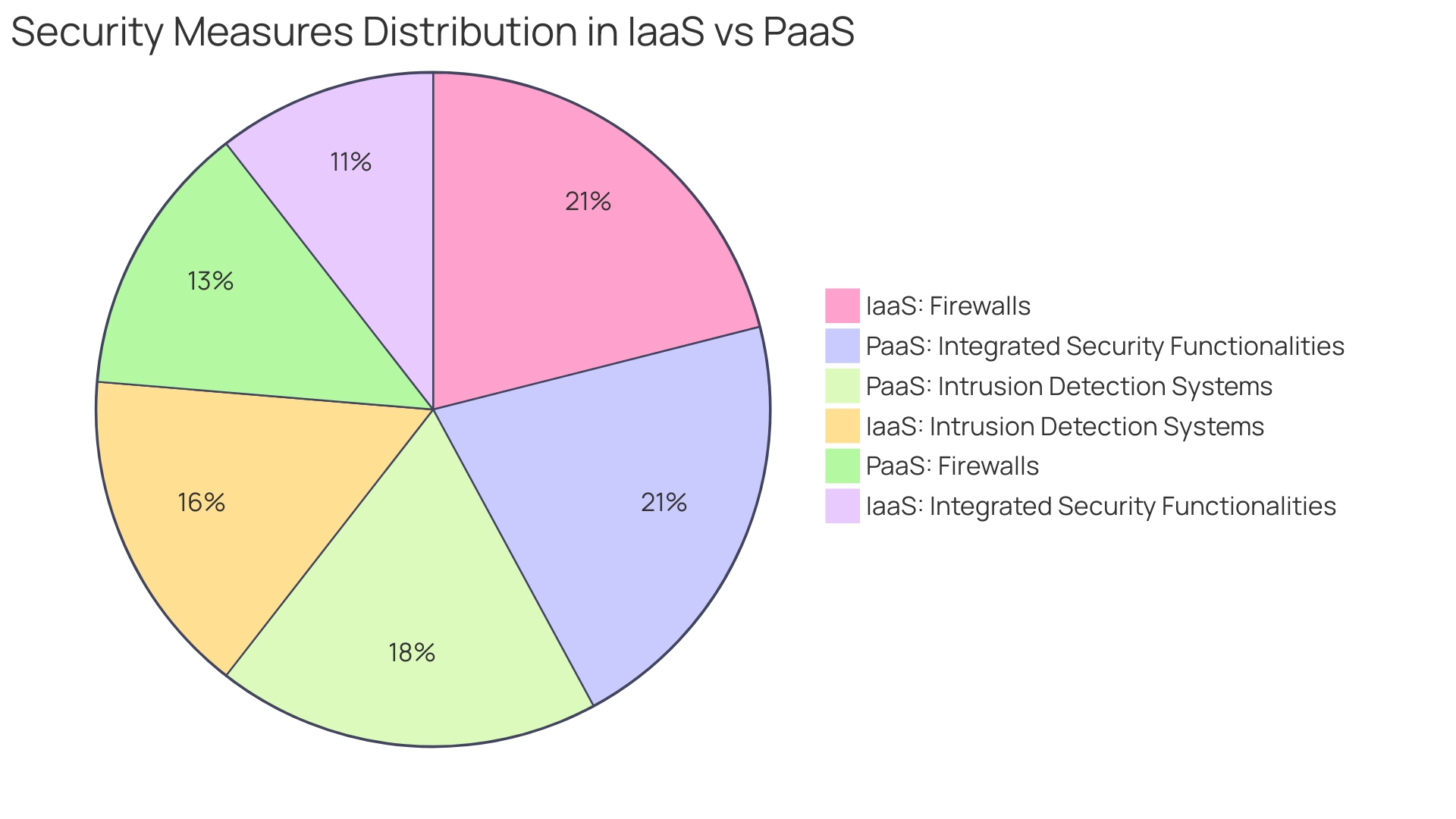
Choosing Between IaaS and PaaS
Selecting between Infrastructure as a Service and Platform as a Service is essential and demands a comprehensive evaluation of a company's specific requirements and strengths. IaaS offers enterprises comprehensive control over their computing resources, making it ideal for entities that possess the technical expertise and resources to manage and maintain their infrastructure. This model empowers IT teams to configure virtual machines, storage, and networks according to specific requirements, enabling them to optimize performance and scalability.
In sharp distinction, platform as a service serves entities concentrated on swift software development and deployment. It abstracts much of the underlying infrastructure management, allowing developers to concentrate on building applications without worrying about hardware or software layers. This is particularly beneficial for businesses with limited IT resources, as they can leverage PaaS to streamline development processes and accelerate time-to-market.
As companies assess their cloud strategies, they should consider various factors such as development speed, control, and resource management. A recent report highlights that 25% of entities in the UK have migrated a significant portion of their cloud workloads back to on-premises solutions, primarily due to security concerns and high project expectations. This statistic underscores the importance of assessing cloud readiness from a technology perspective, including evaluating current technology stacks and application characteristics.
Moreover, aligning cloud services with business objectives is essential. For instance, organizations that are exploring cloud-managed services should meticulously assess their IT infrastructure to identify specific requirements and goals. Providers with a proven track record and robust security measures can significantly impact the success of cloud transitions, ensuring that businesses can leverage the full potential of IaaS or PaaS based on their operational needs.
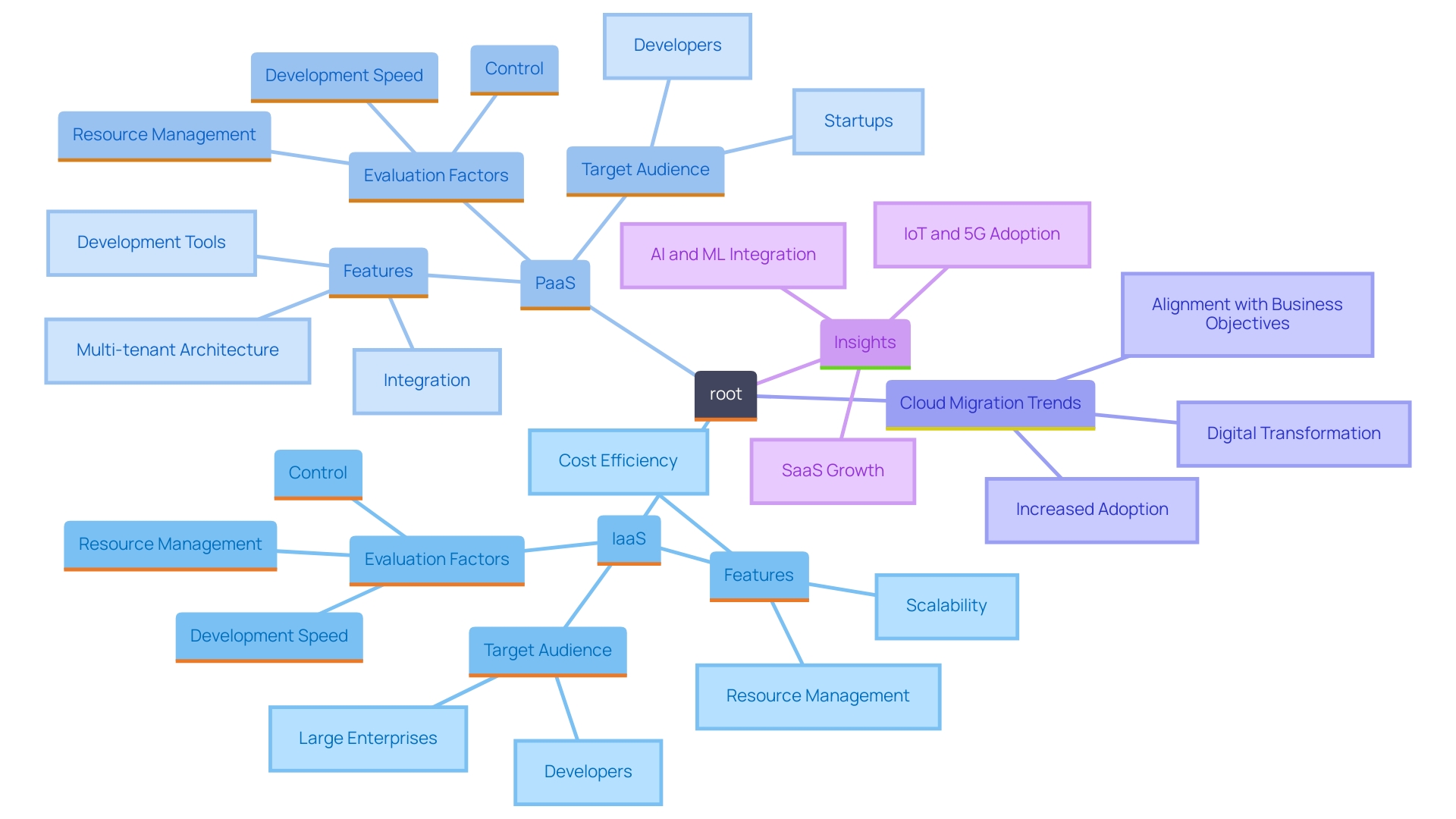
Conclusion
In the dynamic realm of cloud computing, the distinctions between Infrastructure as a Service (IaaS) and Platform as a Service (PaaS) play a pivotal role in shaping organizational strategies. IaaS offers unparalleled flexibility and control over IT resources, allowing companies to tailor their infrastructure to meet specific operational needs. This model is particularly advantageous for businesses requiring extensive customization and scalability, enabling them to respond effectively to fluctuating demands while optimizing costs.
Conversely, PaaS streamlines the application development process, allowing organizations to focus on innovation rather than infrastructure management. With integrated tools and a collaborative environment, PaaS accelerates deployment times and enhances the overall efficiency of development teams. This model is especially beneficial for businesses looking to launch applications quickly and adapt to market changes without the complexities associated with underlying hardware.
The choice between IaaS and PaaS ultimately hinges on the unique needs and capabilities of each organization. Factors such as technical expertise, project requirements, and long-term goals should guide the decision-making process. As businesses continue to navigate the complexities of cloud services, understanding these models' advantages and use cases becomes essential for fostering innovation and driving operational efficiency.
By aligning cloud strategies with organizational objectives, companies can harness the full potential of cloud computing, ensuring sustainable growth in an increasingly competitive landscape.




